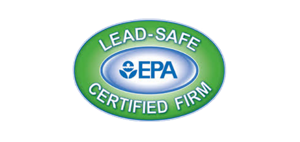Water damage can cause significant harm to your property, and it’s essential to address it as soon as possible. However, not all water damage is irreversible. How do you know if water damage is permanent?
In this section, we will explore the key indicators of permanent water damage that every homeowner should be aware of. Understanding these signs can help you decide if you need to take necessary actions to minimize further harm to your property.
Key Takeaways
- Assessing water damage promptly can help prevent further harm to your property.
- Not all water damage is permanent, but it’s crucial to know the signs of irreversible damage.
- Key indicators of permanent water damage include discoloration, mold growth, and structural disintegration.
- Following the necessary assessment steps, such as seeking professional assistance and documenting the damage, can help determine the severity of the water damage.
- If the damage is indeed permanent, taking immediate action to address it is essential to prevent further harm to your property and ensure structural integrity.
Types of Water Damage
Water damage can occur in several ways, from minor leaks to severe floods. By understanding the various types of water damage, you can better evaluate the potential extent of the damage. Here are some common types of water damage:
| Types of Water Damage | Description |
|---|---|
| Leak Damage | Leak damage is a result of water seeping through small cracks or gaps. This type of damage is typically limited to a small area and can go unnoticed for some time until the effects become evident. |
| Flood Damage | Flood damage is a result of large quantities of water entering your property, causing significant damage to the structure and contents. This type of damage can be caused by natural disasters, broken pipes, or malfunctioning appliances. |
| Moisture Damage | Moisture damage occurs when there is prolonged exposure to moisture or humidity, leading to mold growth and structural damage. This type of damage can be caused by improper ventilation, leaky roofs, and plumbing issues. |
Each of these types of water damage is unique, and it’s essential to take the appropriate steps to address them. Remember, even minor leaks can escalate and cause significant damage if left untreated. Therefore, it’s advisable to hire a professional to assess the extent of the damage and make recommendations for remediation.
Signs of Irreversible Water Damage
Water damage can cause significant harm to your property, jeopardizing its structural integrity and creating an environment conducive to mold growth. Identifying the signs of irreversible water damage is crucial to protecting your property and your health.
- Structural Integrity Issues: One of the most severe effects of water damage is the weakening of a building’s structural components. Water can cause wooden beams and supports to warp, crack, or decay, leading to potentially hazardous living conditions.
- Persistent Moisture: When moisture lingers for more than 48 hours, mold can quickly grow, presenting yet another hazard to the property’s occupants.
- Discoloration: Water stains are a clear sign of water damage, and they can be difficult to remove from some surfaces. Discoloration can indicate severeness and extend of the damage and the opportunity for mold growth.
- Mold Growth: Mold growth is a common result of water damage and can cause detrimental respiratory symptoms to humans and pets. It can adversely impact your family’s physical health and the property’s structure, leading to costly repairs in the long run.
If you recognize any of these signs, it may be time to hire a professional inspector to assess the severity of the damage. In some cases, remediation measures may save the property. In other cases, however, the damage is irreversible, and it’s vital to take prompt action to protect your family and mitigate further harm to your property, particularly if you encounter any of the above indicators.
Steps to Assess Water Damage Severity
Assessing the severity of water damage is important to understand the scope of the damage and plan necessary remediation. The following steps can help you in assessing the severity of water damage:
- Conduct a visual inspection of the affected area to understand the extent of the damage. Take note of any visible signs such as discoloration, peeling paint or wallpaper, and visible mold growth.
- Seek professional assistance from a qualified water damage restoration company to conduct a thorough assessment. Professionals have the required experience and equipment to examine the affected area and determine the extent of the damage better than the visual inspection.
- Document the damage in detail through photographs and written notes. It can help in processing insurance claims or tracking the progress of the remediation process.
- Consider various factors like the duration of exposure and the materials affected in determining the severity of the water damage. Some materials may deteriorate faster than others, and the longer exposure time enhances the severity of water damage.
By following these guidelines, you can make an accurate assessment of the water damage’s severity and take necessary remediation actions accordingly. Seeking professional help is highly recommended to assess the damage comprehensively and ensure long-lasting remediation.
Conclusion
Assessing the permanence of water damage is crucial for protecting your property. By understanding the different types of water damage, signs of irreversible damage, and taking the necessary steps to assess the severity of the damage, you can make informed decisions on what actions to take. If the assessment determines that the damage is indeed permanent, taking prompt action to address any structural issues or mold growth is essential to maintaining the integrity and safety of your property. Remember, water damage can have severe and lasting consequences if left unaddressed, so be proactive and take action to protect your home or business.
FAQ
How do I assess water damage?
To assess water damage, you can start by conducting a visual inspection of the affected areas. Look for signs such as discoloration, warping, or softness of materials. You may also want to check for persistent moisture or musty odors. If you suspect significant damage or are unsure, it is advisable to seek professional assistance.
What are the different types of water damage?
There are several types of water damage that can occur in a property. These include leaks from plumbing systems, roof leaks, flooding from natural disasters or burst pipes, and moisture buildup due to poor ventilation or condensation. Each type of water damage can have varying levels of severity and permanence.
What are the signs of irreversible water damage?
Signs of irreversible water damage may include structural integrity issues, such as sagging ceilings or warped floors, persistent moisture or dampness, visible mold growth, and discoloration of walls or materials. These signs indicate that the damage has progressed to a point where restoration may not be possible without professional intervention.
How severe is the water damage?
Assessing the severity of water damage requires careful observation and consideration of various factors. You can start by conducting a visual inspection of the affected areas, documenting the extent of the damage. It is also advisable to seek professional inspection and consultation, especially if you suspect significant or irreparable damage. The severity may be influenced by the duration of exposure, the affected materials, and the presence of mold or structural issues.
What actions should I take if the water damage is permanent?
If you determine that the water damage is permanent, prompt action is essential to protect your property and ensure the safety of its occupants. Depending on the severity, you may need to address structural issues, such as reinforcing weakened foundations or replacing damaged walls. Mold remediation may also be necessary to prevent further health hazards. Consulting with professionals specialized in water damage restoration will help you determine the specific actions you need to take in your situation.









